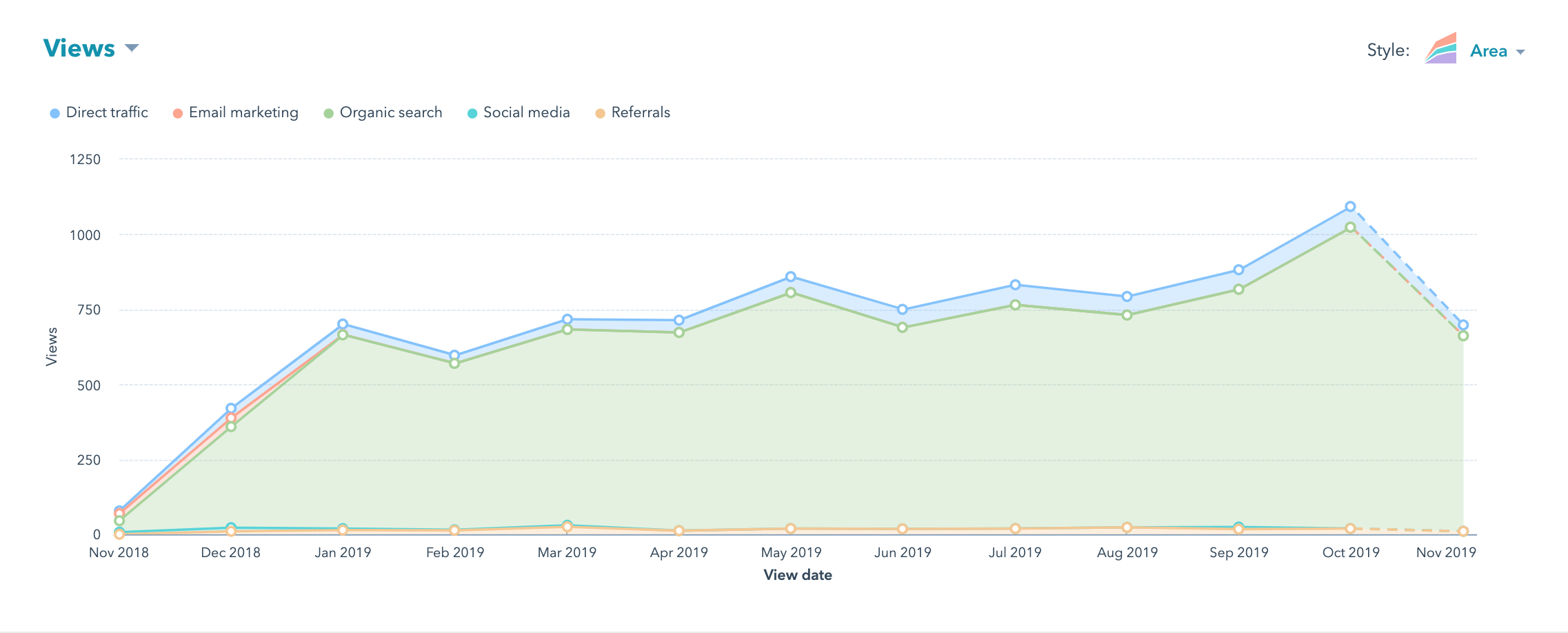
Kuno Creative’s Highest Performing Content Marketing Strategy of 2019

The marketing mavericks at Kuno Creative spend a lot of time looking at content strategies to determine what works and what doesn’t. Every so often, our self-critique reveals a content marketing strategy so powerful, it outperforms them all. To our surprise, the reigning champion of 2019 also happened to be one of our most cost- and time-efficient practices, the likes of which you can implement right away! Ready for the big reveal?
Our most successful content marketing strategy in 2019 involved dusting off old content and republishing it (after making crucial updates, of course). As one of our technology-based clients can attest—the simple act of recycling content resulted in an average 375% increase in viewership!
What about duplicate content?
What about originality?
Won’t publishing the same information tick off subscribers?
Not if you republish content correctly. Here’s the quick and easy on why this tactic works and how you can use it in your 2020 content marketing strategy.
Republished Content In Your Content Marketing Strategy
Why Republished Content Works for Your Audience:
1. People are too busy to read.
At 121 emails, 75 text messages and over two hours spent on social media per day, your audience can’t possibly read every guide, email or article that blips across their screen.
2. Sage advice is evergreen.
If you played your hand well in 2019, you probably have a lot of new subscribers who weren’t around a year ago. Why not share your sage advice with them?
3. Your audience didn’t retain the information.
The vast majority of readers skim, speed-read or multitask while reading, which leads to poor retention.
4. Your timing is off.
As marketers, we strive to deliver the right content to the right person at the right moment, but hitting the target every time is a hoop dream. Why not take some extra shots?
Why Republished Content Works for Your Business Goals:
1. Stabilizes Content Consistency
Republishing old content ensures that the editorial calendar stays full despite distractions that interrupt productivity (like the holiday season).
2. Gives More Bang for Your Buck.
You paid good money to create quality marketing content. Why use it like a piece of disposable plastic (tsk-tsk)? By recycling content that still has value, you can increase the return on your digital marketing investment.
3. Keeps Search Engines Well-Fed
Readers don’t want your old advice from 2017. They want the latest information (practically the moment it becomes available). In other words, your high search rankings will eventually fall. By refreshing information and, most importantly, the date published, you can continue your winning streak on SERPs.
Kuno Creative’s Results
Below is the analytical data from one of our content republishing experiments. As part of a robust digital marketing strategy, we republished 15 of the client’s older content pieces. As mentioned, viewership rose by 375% on average. At one point, we saw it spike to 1,151%.
See for yourself:
 Republishing content also increased form submissions by an average of two per content piece. In some cases, our client received as many as eight additional submissions. In all cases, readers spent at least 1-2 minutes more on the page. Needless to say, we’ve added content republishing to the personalized strategies we create for other clients in technology, healthcare, industrial and renewable energy. Here’s how we do it:
Republishing content also increased form submissions by an average of two per content piece. In some cases, our client received as many as eight additional submissions. In all cases, readers spent at least 1-2 minutes more on the page. Needless to say, we’ve added content republishing to the personalized strategies we create for other clients in technology, healthcare, industrial and renewable energy. Here’s how we do it:
Harvest Old Content
Generally, our content marketing gurus recommend waiting a year before republishing a piece of content.
Tips:
- Look for content that performed well, but make sure traffic and engagement were tied to your desired personas (you don’t want to continue attracting low-quality leads).
- Look for content with valuable information that did not perform as well as expected.
- Republish guest posts on your website.
- Make sure you understand the extent of the changes needed to bring the content up to date.
- Obtain any necessary permissions to republish (e.g., approval from the writer or original publisher).
Make Strategic Updates
In most cases, you’ll need to put some effort into refreshing the relevancy and accuracy of the information. Don’t just make changes, ask yourself if the changes add value to the content. Here’s a handy checklist to help:
- Audit Statistics: replace with the most current data available.
- Check Links: verify that they connect to pages that still exist.
- Assess Keywords: confirm that keywords align with the current strategy.
- Update CTAs: route readers to the latest guides or forms.
- Evaluate Title: tweak to make it more appealing (but use the same keywords).
- Review Meta Description: ensure that the information is still accurate and appealing.
- Determine URL: either redirect the original URL to a new URL or keep the original URL live and create a new URL.
Tip: To preserve or improve SEO, redirect the original URL to a new URL (so that the original URL is no longer live). Next, spruce up the title and meta description (especially if the original post had a low click-through rate (CTR). Google favors content published within the last six months to a year. By removing the older original article, you will avoid sharing traffic that could be helping your new post rank even higher. However, before you remove a post that ranked well in the past, make sure the new post is optimized for the same keywords.
Promote Republished Content
Transparency is an essential part of what makes republishing content successful. Don’t try to pull a fast one on your readers (or search bots).
- Use the rel=“canonical” link element in the republished URL to let search engines know where the original content lives or that the new content is a copy. This will prevent duplicate content penalties.
- Republish to reputable sites like LinkedIn, Business2Community or Business Insider.
- If you make significant updates to a post, include a note to let readers know it has been updated with new information.
Final Tip: While you rethink content marketing tactics for 2020, don’t forget to add Key Performance Indicators (KPIs) to the list. The metrics you prioritize largely depend on the primary objective of your marketing efforts. Last year, the goal might have been brand awareness, in which case, leads and social signals were the primary focus. This year, the goal might be to increase conversions, which will draw your attention to a completely different set of metrics, such as:
- Marketing Qualified Lead (MQL) to Sales Qualified Lead (SQL) ratio
- Click-through rate (CTR)
- Time on page
- Points of entry and exit
Regardless of where your digital marketing priorities lie, republishing content will support initiatives tied to every level of your marketing funnel.






